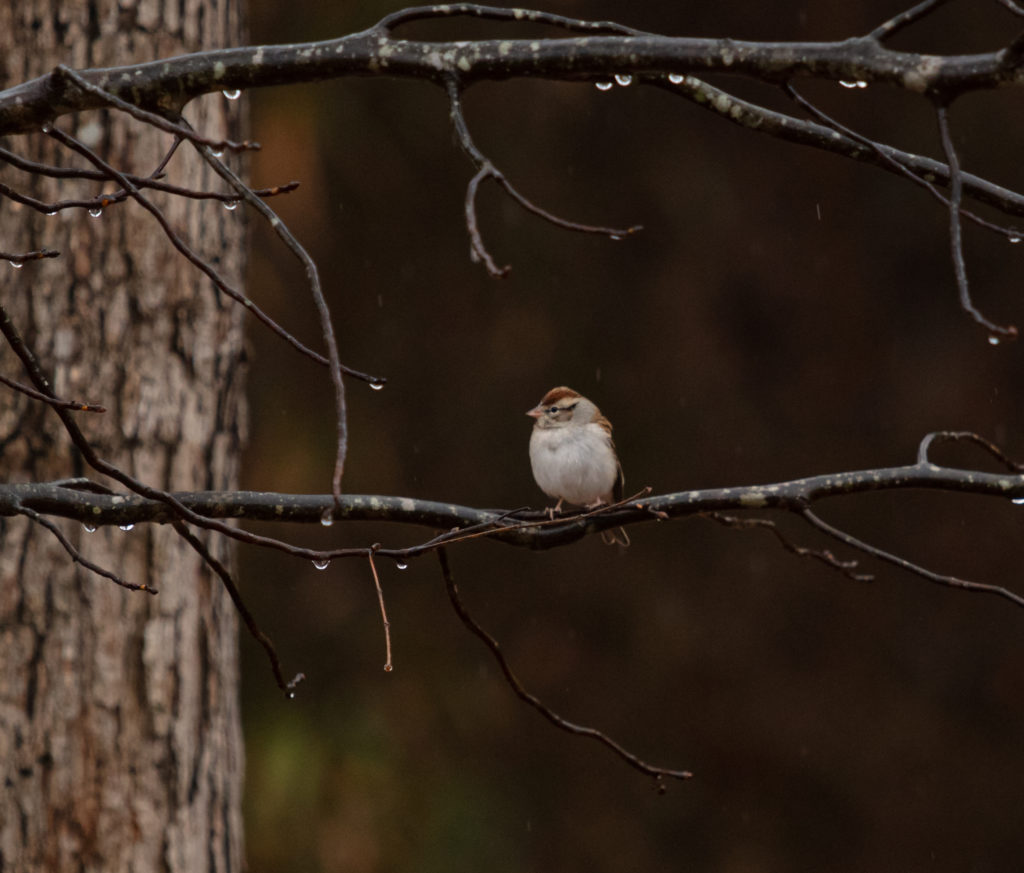By Sally Siko
Check out this sweet little Chipping Sparrow. I photographed him this past weekend while birding at Cape Fear Shiners Park in Lillington North Carolina.
They are a common sight here in the Raleigh area, especially during the winter months when they emerge from the woods and into our yards in search of an easy meal.
So much so that Chipping Sparrows have earned a reputation of being somewhat tame, as they’ve moved into the suburbs and city’s, they have become acclimated to the company of their human neighbors.
This pair was perfectly content to chill out on their perches and hardly cared that I was nearby.
If only every bird species was so cooperative lol!

If you would like to attract more Chipping Sparrows to your yard, all you have to do is feed them.
Unlike many of our familiar backyard feathered gems, they do not eat sunflower seeds; however, they are particularly fond of red and white millet.
Thats actually kinda nice because that’s the seed which most of the other species eschew leaving the bulk of the millet to be enjoyed by the Chipping Sparrows.
Other foods they will eat include scratch feed, suet, peanut hearts and crushed (unsalted ofc) pecans. They will also snack on mealworms if you’re inclined to offer them at your feeding station.
Since Chipping Sparrows are primarily ground feeders, you can scatter the seed directly on the ground. However, they will visit your hanging feeder buffet with featuring trays or hopper style feeders too when there’s food to be had.



These delightful little sparrows are found in a wide variety of open woodland habitats, a somewhat of an unusual trait as most of North Carolina’s sparrows are found mainly in grassy fields.
The woods and swamp areas here at the CFSP are exactly the kind of spot that these guys love best.
Found in all 100 of North Carolina’s counties, Chipping Sparrows are year round residents of the Tar Heel State so be on the lookout for them anytime you step outdoors.
By the way, I offer bird watching tours at Cape Fear Shiners Park. If you’d like to join me check out the link below…
Photos by @sally_siko of @bestlife_birding captured on my mighty mirrorless monster, the @canonusa #R5









